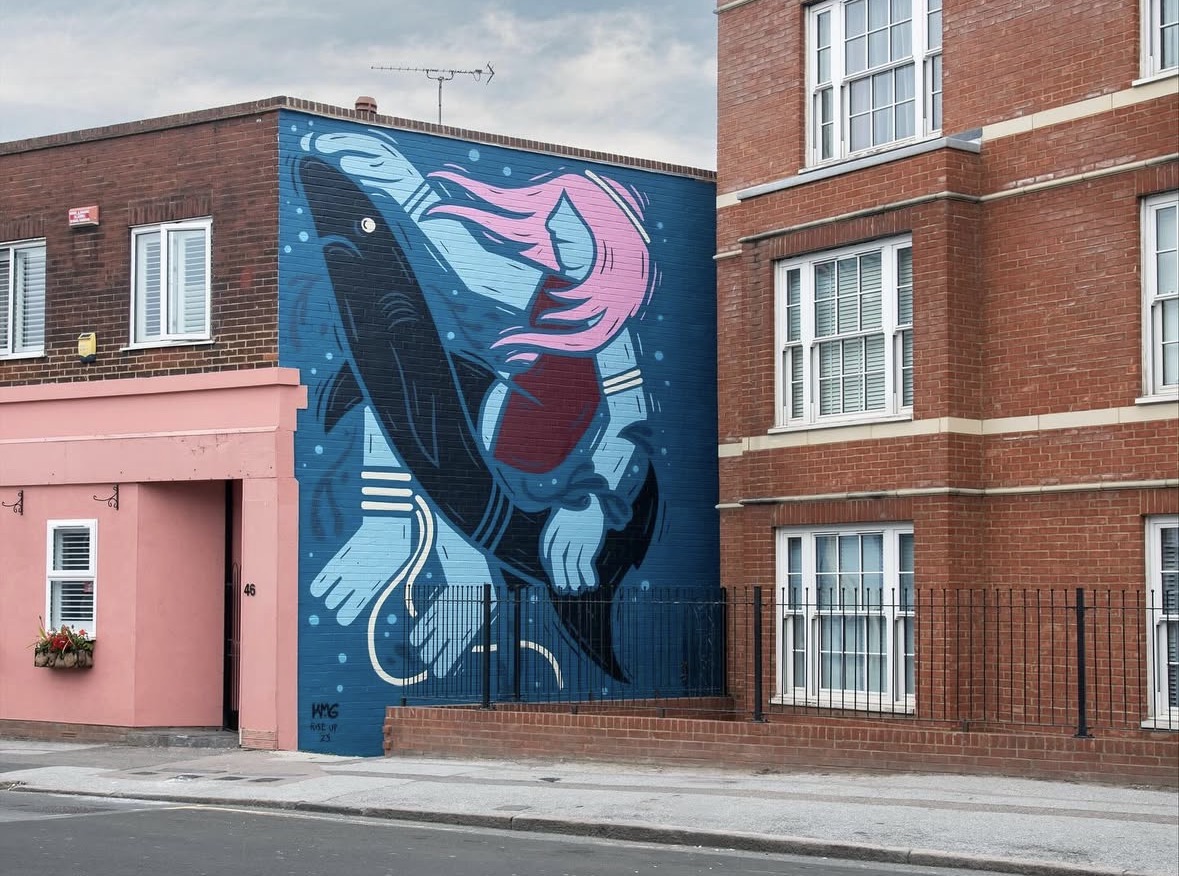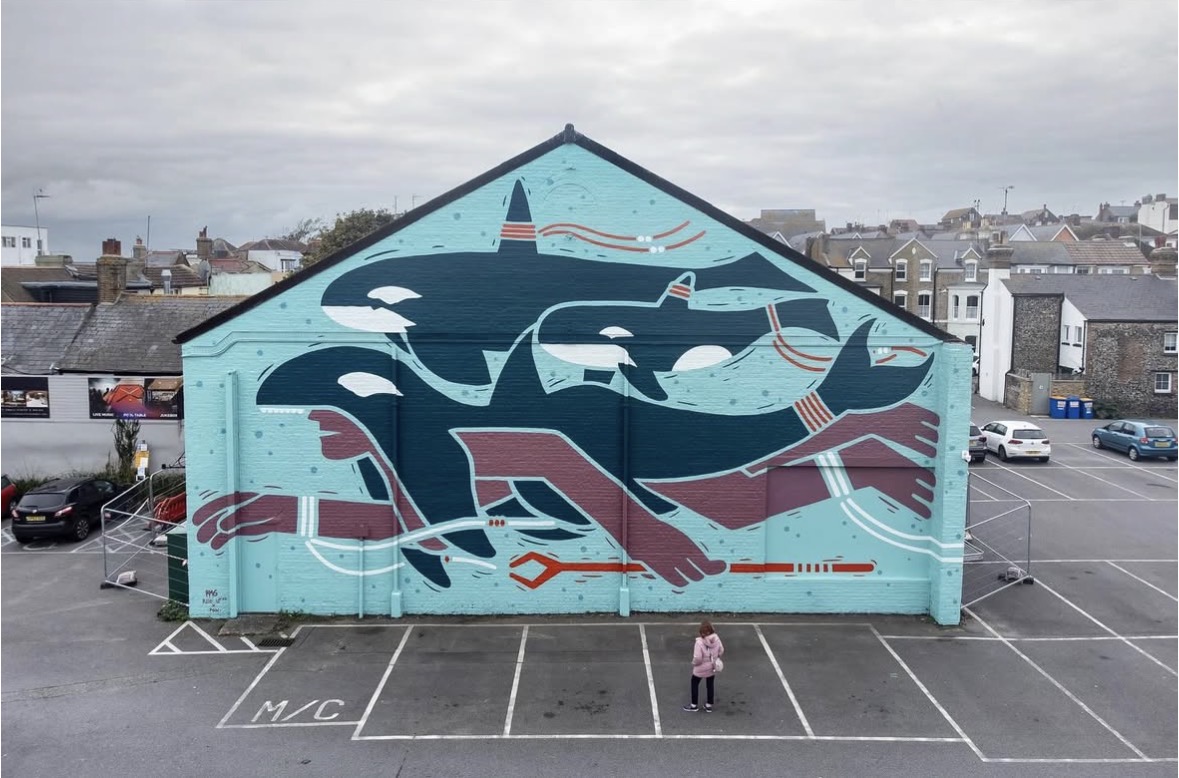Across the world, women make up nearly half of the fisheries workforce, yet are concentrated in lower-paid roles — and when ocean ecosystems decline, they’re disproportionately affected. At the same time, women are leading ocean conservation efforts: marine biologists and oceanographers are breaking barriers in research, Indigenous women are maintaining traditional ocean stewardship practices and grassroots activists are driving efforts to reshape public perceptions of marine life. According to UNESCO, achieving gender equality in ocean governance isn’t only about representation — it’s the key to sustainable ocean management, with research demonstrating women leaders are more likely to prioritise environmental protection and long-term ecosystem health.
In Thanet, a new series of murals brings this intersection of feminism and marine conservation into public view. ‘She Rises With the Sea’ is a partnership between Power of Women Thanet and Rise Up Residency, featuring three large-scale works across Broadstairs, Westbrook, and Margate. Lead artist KMG, whose style blends folklore with conservation messaging, hopes the murals will inspire viewers “to learn about and appreciate the species we have within our waters and why their beauty is significant and important.” Louis Michel, Margate-based artist and co-founder of Rise Up Residency, supports the project in a mentoring role. He reflects on how living in coastal towns and spending time in wild environments has had “untold impacts on how [he] look[s] at the world. Without it, the world would be very linear and dull.” This perspective is evident in the project, which combines environmental awareness with community engagement. The first two murals were revealed on 11 October to mark International Day of the Girl, while the final piece is due to be unveiled in December.
In Broadstairs, The Ocean Wolf and the Selkie draws on imagery from Gaelic and wider Celtic folklore. One element of the mural is linked to the Madadh-cuain, an old term associated with orcas, which KMG interprets through the figure of a woman wearing the skin of an orca so she can swim with a pod — crossing between land and sea, acting as a protector and embodying the responsibility humans hold toward the species. This figure is woven into the selkie myth, in which a shapeshifting woman transitions between seal and human form by shedding and replacing her skin. “The selkie represents strength and resilience but also vulnerability. Having the power to shapeshift between the land and sea using the skin of a seal is symbolic of the harmony these women have between the land and the ocean,” KMG elucidates her understanding of the artwork. “There is also a significance in the stories of humans trying to control Selkies for their own advantage, much like the way many humans behave towards marine life. But in the end, the Selkies often take back the power and return to sea.”

The Shark Whisperer, located in Westbrook, features a pink-haired free diver alongside the UK’s endangered Tope shark. The woman reaches toward the shark’s snout in a gesture reminiscent of conservationist Ocean Ramsey’s approach to calm, respectful interaction with large marine species, serving as a visual cue that frames sharks not as threats but as co-participants in the marine environment. The Tope itself is a gentle species, with no recorded unprovoked attacks on humans, and is known for its powerful long-distance swims. By placing a woman diver in quiet dialogue with a vulnerable native shark, the mural challenges entrenched, fear-driven narratives and instead centres curiosity and coexistence.
We live in a time where women make up 33% of all researchers globally, yet represent only around 12% of national science academy members, starkly illustrating the gap between participation and recognition. On this note, KMG speaks to a broader message behind the murals in Thanet: “In a time where we are witnessing attempts to erase women’s voices and contributions within the history of science, now it is more important than ever to champion women working within these fields and beyond.” Through this project, contributions that have long been overlooked are brought back into visibility.
What at first glance appear to be colourful celebrations of women and the sea are, in fact, layered with deeper meaning: they introduce passersby to endangered species, revive ancient myths and emphasise the crucial roles women play in ocean conservation. Projects like these — particularly large-scale murals that are impossible to ignore — prove how art can accomplish more than inspire creativity or offer aesthetic enjoyment; it can make viewers pause and reconsider the relationships between people, nature and culture at a critical moment in climate history.

